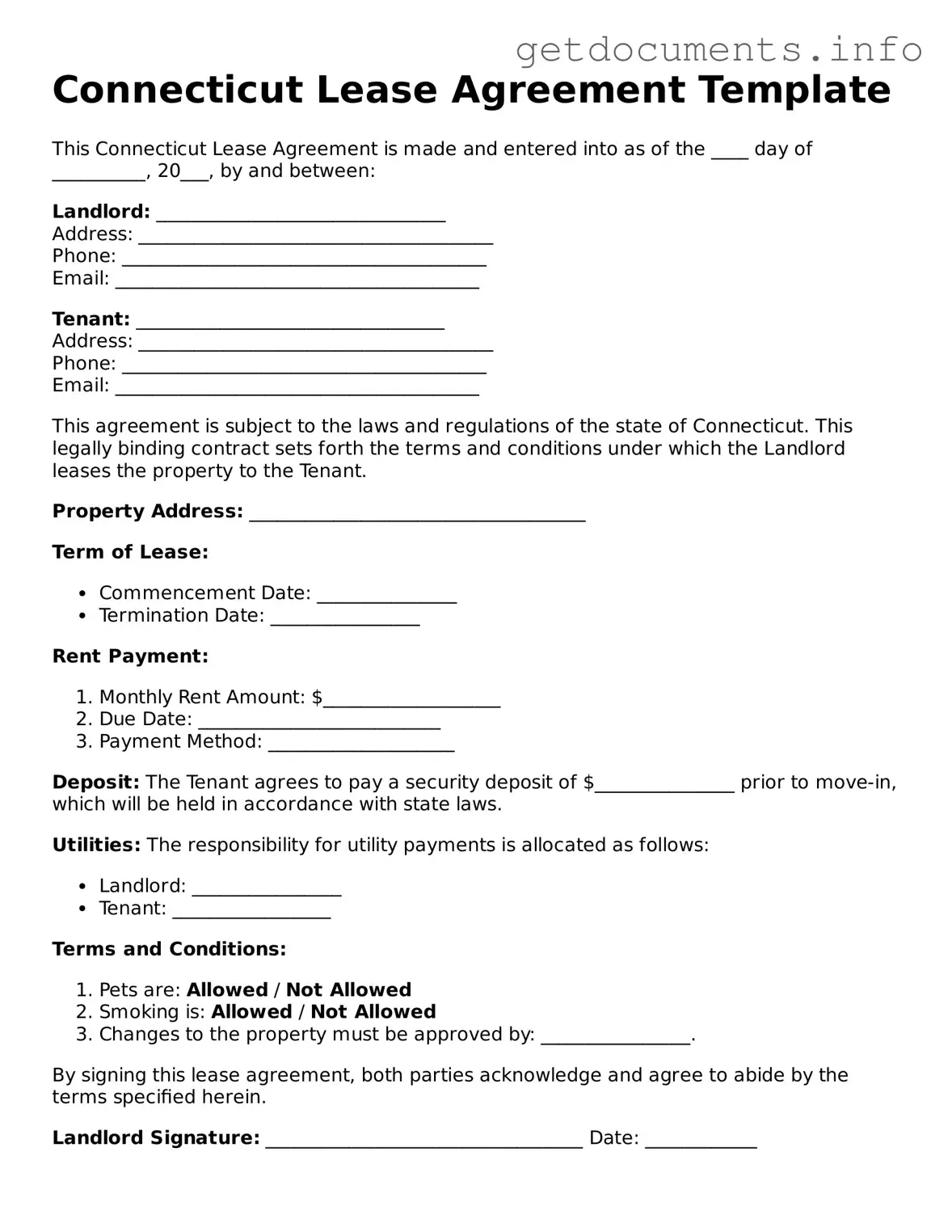In Connecticut, a lease agreement serves as a vital document that outlines the relationship between landlords and tenants, ensuring clarity and legal protection for both parties. This form typically includes essential elements such as the names of the involved parties, the property address, and the duration of the lease, which can range from a few months to several years. Additionally, it specifies the rent amount, payment due dates, and acceptable methods of payment, thus setting financial expectations upfront. The agreement may also address security deposits, maintenance responsibilities, and rules regarding pets or alterations to the property, providing a comprehensive framework for living arrangements. Furthermore, it often incorporates clauses that detail the procedures for terminating the lease, including notice periods and grounds for eviction. By clearly articulating these terms, the Connecticut Lease Agreement form helps to prevent misunderstandings and disputes, fostering a more harmonious rental experience.
